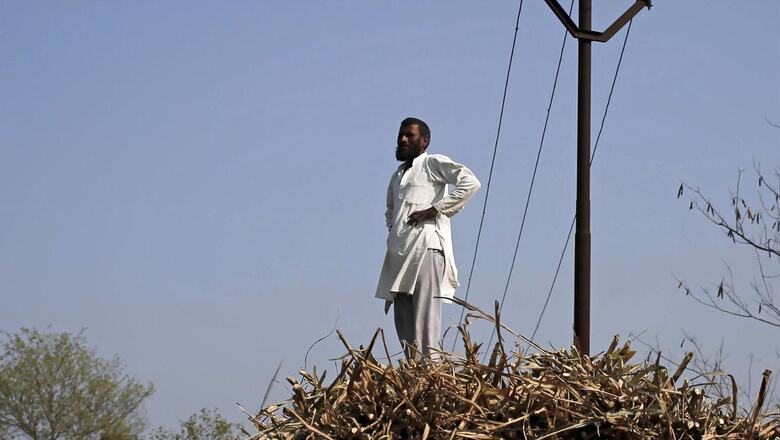
views
Prime Minister Narendra Modi announced the repeal of the contentious farm laws on November 19, 2021 and urged the protesting farmers to return home. These three bills, namely, the Farmers’ Produce Trade and Commerce (Promotion and Facilitation) Bill 2020, the Farmers (Empowerment and Protection) Agreement on Price Assurance and Farm Services Bill 2020, and the Essential Commodities (Amendment) Bill 2020, arrived with India’s agrarian distress as their backdrop.
One of the leading causes of worry for the protesting farmers was that the new farm laws would adversely affect the Minimum Support Price (MSP) regime that has been in place since the 1960s. While Prime Minister Modi mentioned in his speech that a committee would make MSP more effective and transparent, it remains unclear how the government will proceed in making MSP a legal right. In this context, some key questions about the MSP regime need to be analysed.
Why Does the MSP Keep Rising?
While the government keeps hiking the MSP, the farmers argue that MSP is not enough. Since MSP keeps increasing yearly, it costs the government both financially and logistically.
The reason why MSP has risen over the years is because of the rising input costs. The Committee on Doubling Farmers’ Income report points out a substantial rise in the cost of material inputs which has ultimately led to a fall in the net income from the crops over the years.
The consistently rising fuel prices in India also contribute to a hike in input costs. Since 2015, the fall in international crude oil prices has been compensated by raising taxes. This ultimately keeps the retail price of petrol and diesel high. The rising fuel prices add to the burden of the farmers.
Furthermore, the country’s flawed fertiliser policy has led to an increase in the input cost for the farmers. The government introduced the Nutrient-based Subsidy (NBS) scheme in 2010. Under this scheme, the subsidy on non-urea fertilisers was deregulated to reduce the subsidy burden. According to the Economic Survey 2015-16, 41 per cent of the subsidised urea is either diverted to non-agricultural uses or smuggled across borders. The survey also estimated that because of these leakages, only 35 per cent of the total urea subsidy actually reaches the small and marginal farmers. As a result, many farmers have to resort to buying urea from black markets at a higher price. Additionally, the fertiliser subsidy has increased over the years which means that the NBS scheme has not led to a reduction in farm subsidies. Therefore, neither the government is benefitting from this scheme nor the farmers.
Is the Importance That MSP Receives in Policy Discussions Justified?
In 2018, then Finance Minister Arun Jaitley announced that MSP would henceforth be fixed at 1.5 times the production costs for crops as a predetermined principle. This was recommended by the National Commission on Farmers, chaired by professor M.S. Swaminathan.
The government considers the A2 + FL formula for ascertaining the cost of production. A2 is the cost of inputs that are paid for. These inputs include seeds, fertilisers, hired labour, rent for hired machinery, interest on working capital, operating cost of own machinery, and rent paid on leased land. FL includes an estimated value of unpaid family labour.
Swaminathan has clarified that the commission’s recommendations were based on “complete costs”, which are given by C2. C2 includes all these aforementioned costs, plus the estimated rent and interest forgone on owned land and fixed capital assets. Evidently, C2 is greater than A2 +FL. Therefore, the announced MSPs are not enough to cover the costs borne by the farmers.
Additionally, an overwhelming percentage of farmers remain outside the ambit of MSP. According to the Report of the High-level Committee on Reorienting the Role and Restructuring of Food Corporation of India, only 6 per cent farmers are actually able to sell their crops at MSP.
When procurement rises, private traders conclude that there is a surplus grain with the government. They fear that if this grain is released in the market, the prices will crash. The government of India has been continuously reporting excess foodgrain stocks. To tackle this, the Commission for Agricultural Costs and Prices has recommended disposing of excess foodgrain stocks to save the carrying costs and deal with storage space constraints. As a result, it economically makes sense for private traders to keep their prices low. Therefore, the accumulation of stock pushes prices down in states where procurement does not happen.
The existing MSP regime is neither adequate nor impartial. Therefore, excessive focus on this policy diverts attention from other important issues that require addressing.
ALSO READ | One Size Fits All Will Not Work, Indian Agriculture Needs Decentralised Farm Reforms
Diversification is the Way Forward
1. Need for crop diversification and geographical diversification
The procurement at MSP is mainly limited to rice and wheat. This procurement is also highly skewed in favour of a few states such as Punjab, Haryana and Madhya Pradesh. Therefore, there is a need for geographical diversification of the procurement process.
Policymakers across the world recognise the importance of a diversified diet. In this context, it is important to diversify the commodities distributed under the Public Distribution System. For this to happen, crops other than wheat and rice must be bought at MSP from the farmers.
2. Shift the focus away from prices
The government is making efforts to increase the prices that farmers receive in order to make agriculture more profitable for them. At the same time, every year, demands are made to increase the MSP.
As discussed, raising the MSP is not good news for farmers of states where procurement is not actively done.
According to the 10th Agriculture Census of India, the number of small and marginal farmers with less than two hectares of land has been rising. They now account for around 86 per cent of all farmers. Additionally, the average landholdings of such farmers were reported to be less than 1 hectare each. This means that in most cases, the marketable surplus, that is, the production minus consumption, produced by these farmers, is very small, and sometimes even negative. As a result, most of these farmers are net buyers of food and not net sellers of food. Therefore, if prices rise, it will negatively impact their ability to afford food, thereby making them food insecure.
On the one hand, there is a need to make farming more remunerative. On the other hand, high prices of food and agricultural commodities are not necessarily desirable since they can end up hurting poor farmers.
The only way out of such a paradoxical situation is to shift the focus away from prices and towards costs. If the costs incurred by the farmers are reduced, farming will automatically become profitable for them. Therefore, the policy focus should be on how the cost of production for the farmers can be reduced.
Ultimately, the focus of the green revolution was on wheat and rice. These crops received extensive research, inputs and market support. In order to promote crop diversification, the government needs to give a similar degree of support to other crops. These crops would also have the potential to increase farmers’ incomes significantly. This can be done by facilitating collaboration and links between agriculture universities, experts, and states and the Centre’s agriculture departments.
Neha Chauhan is a Research Associate at SPRF. Headquartered in New Delhi, SPRF is a young policy think tank seeking to make public policy research holistic and accessible. The views expressed in this article are those of the author and do not represent the stand of this publication.
Read all the Latest Opinions here



















Comments
0 comment